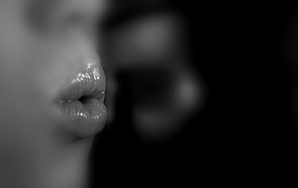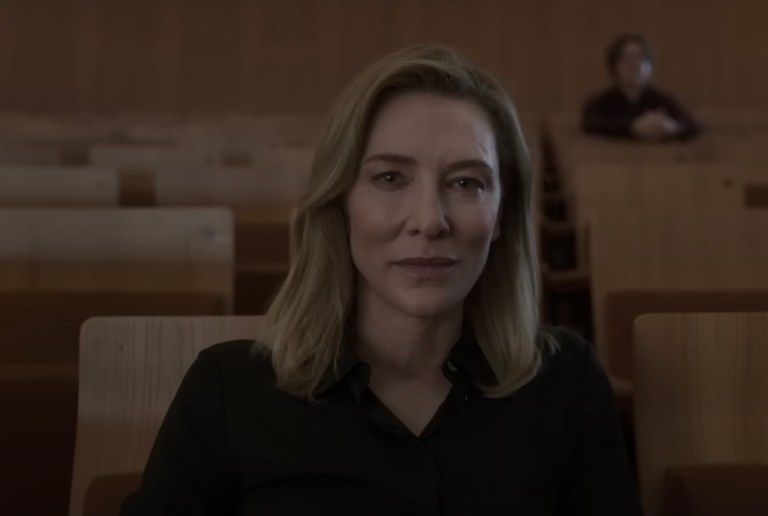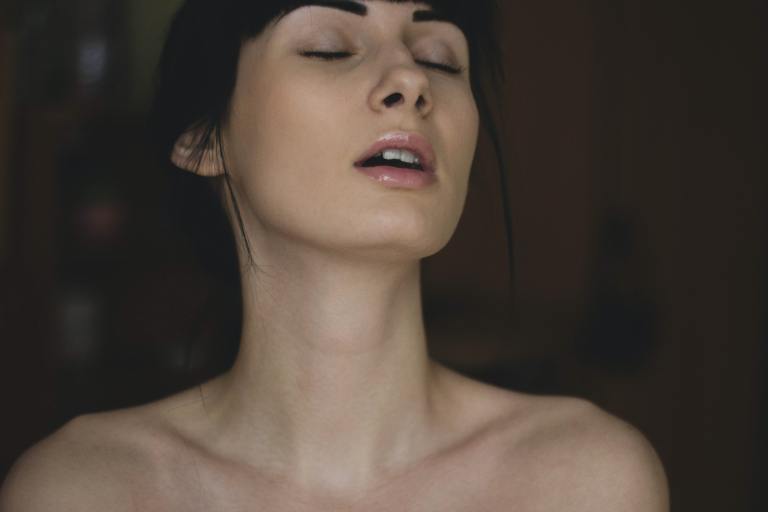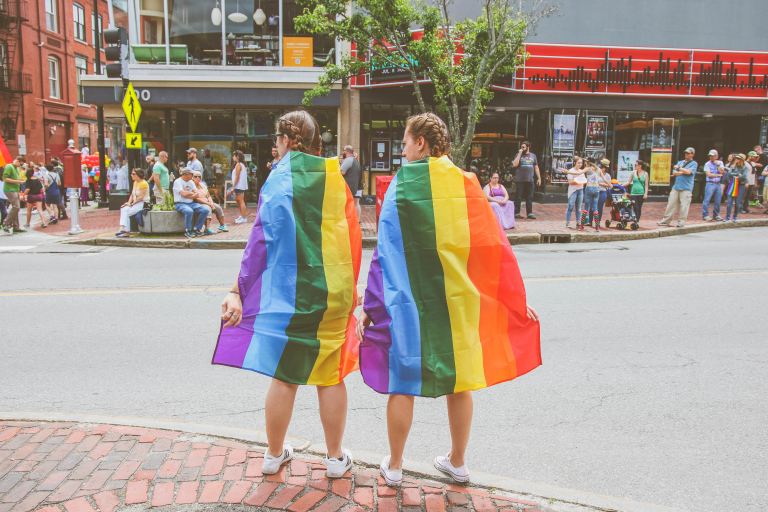Why We Need Public Sex Spaces For Women
But where are the lesbian spaces? In recent years, many queer and lesbi-friendly bars have closed up shop in Chicago, including T’s, which abruptly announced closure in March.
By ![]() Nico Lang
Nico Lang

I live in Chicago. If you don’t, here’s the skinny on the queer scene.
If you are a gay man looking to go out in Chicago on a Saturday night, a spider web of events spin out from Boystown. Lakeview has Sidetrack and Spin. Rogers Park offers Mayne Stage and Jackhammer. Edgewater boasts Big Chicks and the Granville Anvil. If you’re downtown, check out Second Story and the aptly named Downtown Bar. The South Side offers Jeffery Pub, Club Escape and InnExile.
But where are the lesbian spaces? In recent years, many queer and lesbi-friendly bars have closed up shop in Chicago, including T’s, which abruptly announced closure in March. Many Andersonville residents were shocked, as the bar was one of the last remnants of “Girls’ Town,” the neighborhood carved out during the late ’80s and ’90s.
Chicago’s last full-time lesbian bar went under in 2009. Last month, West Hollywood’s The Palms shut down after 50 years of business and the West Village’s Rubyfruit Bar and Grille closed in 2008. When Michigan’s The Chrome Cat settled its tabs one last time, it was one of the last lesbian bars in the whole state. The site Lost Womyn’s Space tracks the disappearance of lesbian spaces across the country, a graveyard of empty buildings and lost histories.
T’s closure forced AfterEllen editor Trish Bendix to ask what many were thinking, “Is this the end of an era?”
There is certainly a “gaping hole” where the scene used to be. Like many formerly lesbian-centric neighborhoods, Andersonville is increasingly gay male and yuppie-dominated.
Formerly lady friendly bars The Closet and Big Chicks have seen an influx of male clientele crowd out the womenfolk, although Big Chicks offers nights to give feminine and queer-identified folks an inclusive space to dance and feel safe.
Doll House and Joie de Vine offer lady-centric events for queer Chicagoans, and inclusive events like Slo Mo and Chances Dances create programming for folks across gender expressions and sexualities.
Rogers Park’s Parlour may go the furthest, The queer bar offers events ranging from hip-hop nights to events for lipstick femmes.
In an interview with The L Stop, Parlour co-owner Jennifer Murphy stated that her goal is to “impact [not just] the lesbian community but the GLBT community as a whole.”
As a response to the transphobia and marginalization reported in spaces like the Michigan Womyn’s Festival, Murphy hopes to rethink female space.
“It has been our intention not to create boundaries within genders and sexuality,” Murphy said. “Parlour is here to explore and open minds to new and exciting experiences.”
Slo Mo’s Kristen Kaza argued that roller derby leagues, meetup events and concerts have taken the place of the traditional bar scene. Kaza told Time Out Chicago that bars aren’t as “relevant” for modern women as they were their queer predecessors or the same way they are men.
“Gay male bars receive significantly higher traffic because the men are usually there for the main purpose of meeting and possibly hooking up, and gay women often need an additional, or just alternative, motivation,” she said.
Cassandra Avenatti, an influential organizer cited as one of The L Stop’s “lesbians to watch out for,” argued that changing views on LGBT folks might be a factor in lesbian bars’ relevance too.
“With the increased acceptance of queerness in mainstream culture, some queer folks might feel less compelled to frequent gay social spaces,” Avenatti said. “There may be less of a feeling of necessity or urgency around queer bars.”
In a piece published last month on The L Stop, Avenatti argued that while queer women have been more active in the public sphere as organizers and activists, the lack of community spaces for women has moved female sex into the margins.
Avenatti said, “I can’t count how many times I’ve been asked […], “What do women do in bed?’”
Avenatti said terms like “lesbian bed death” give folks the mistaken impression that women “hold hands and talk about puppies.”
She worries that even health providers have a profound lack of knowledge when it comes to lesbian intercourse, often feeling they don’t have to address safer sex practices with queer female patients.
“If health care providers have little to no knowledge about the ways in which queer women have sex, they cannot appropriately counsel women on risk reduction,” she said.
Women who have sex with women (WSW) are at risk of STDs, and although some resources exist, there isn’t the same community solidarity around sexual health issues there is for gay men. According to Avenatti, questions on “women’s sexual health practices have remained largely unaddressed.”
Avenatti argues more sex websites or bathhouses in the community could improve the conversation on female sex.
For gay men, websites like Grindr and Scruff allow users to connect with each other in a space that allows them to express their sexuality. But among queer women, Avenatti said “the pervading idea [is] that if you are interested in casual or anonymous sex, you are that kind of girl.”
“Many women are socialized to view their sexual desire (and bodies) as negative or dangerous, and are instructed to keep their longing private, suppressed,” Avenatti said. “We are not allowed space to unapologetically explore our needs and claim sexual liberty, and many of us have internalized a degree of shame about our sexuality and our bodies.”
A first step to change that? Avenatti believes women need a bathhouse for public sex.
For the past two decades, a bathhouse for queer women and transfolks has operated in Toronto’s gayborhood, known as the “bathhouse capital of the world.” Called the Pleasure Palace (or “Pussy Palace”), organizers saw the event as a way to address the dearth of opportunities for “women to develop a sexual imagination, literature, techniques, art or knowledge.”
In a study of the Pleasure Palace, Catherine Nash and Alison Bain argue it’s about more than sex.
“The bathhouse is more than just a building, a space or an ‘event’. It can be interpreted as a sexual sanctuary, a safe-haven, a second-home to some, a hiding place to others,” they wrote.
Similar events in Halifax, like She Dogs, offer female attendees workshops on sex practices including how-to demonstrations.
Gay male bathhouses often act as spaces of exclusion, throwing out trans visitors if patrons complain. Pleasure Palace has a zero tolerance policy for transphobia, and Avenatti feels that is crucial to its success.
“Many of the ‘women only’ spaces that exist have organizers that define what they feel a woman is and allow attendance only by those who fit their definition,” Avenatti said. “A queer women’s bathhouse event [should] be open to anyone who [identifies] as a woman, period.”
Although many in the queer community feel that female-centric spaces affirm the binary, dismissing those who don’t fit the rigid categories, Avenatti “wholeheartedly” disagrees.
“Women-positive, women-centric spaces can be incredibly powerful and healing,” she said. “Spaces in which women, all women, can finally exhale, not worry about street harassment and other gender-based violence and exist in a space that affirms their experiences are essential.”
As female spaces rapidly disappear, Avenatti believes that these kinds of experiences for women are as “important and relevant” as ever. She said she would love to see a Pleasure Palace event spring up in Chicago as a way to celebrate a new era of sex-positive community building by giving folks a safe space to explore and challenge sexuality.
“I have had incredibly positive experiences with public spaces where nudity was required, like saunas,” Avenatti said. “Being in spaces where people did not react to nakedness or the thousand different, beautifully strange bodies was so life and body-affirming. I want everyone to have the opportunity to feel this way.” ![]()




